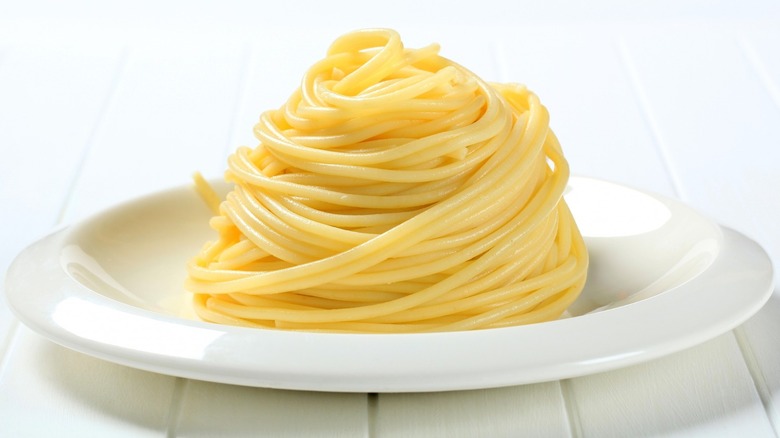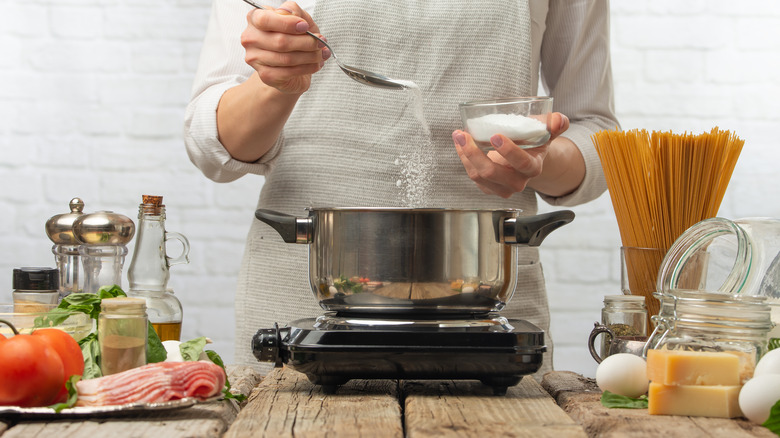The Simple Tip For Making Gluten-Free Pasta Taste Way Better
While someone with a gluten allergy or sensitivity may have once been required to give up pasta altogether (or make their version from scratch), that's no longer the case. Stores offer a wide range of gluten-free pasta options. However, many kinds of gluten-free pasta can turn into tasteless, gummy-textured mush if cooked improperly, which is why the technique is more important than when cooking regular pasta, which tends to be more forgiving.
Though you'll want to put some time and energy into making a delectable sauce to serve your noodles, you also want to infuse some flavor into the pasta from the early stages. First, you need to salt the water you use to boil gluten-free pasta as you would for regular pasta. This step is crucial since gluten-free pasta tends to be more bland. The exact amount of salt will depend on your preference: While you may have heard that pasta water should taste like the ocean, that's not a consistent measurement. 1 tablespoon per gallon of water (and 1 gallon of water per pound of pasta) is a good rule of thumb for regular pasta, but you should double that for gluten-free varieties.
Salting your pasta water is an essential step in creating a pasta dish that is packed with flavor. That's because salt helps season each noodle as it cooks and builds flavor before you incorporate any sauce.
Tips for the ideal gluten-free pasta texture
While you certainly don't want bland noodles, salt isn't the only game changer for your gluten-free pasta. Another big factor in how a final dish will taste is its texture — no matter how impeccable your flavors, a pasta dish won't be as appealing if you're left with gummy clumps of noodles.
This is another area where adding a little something extra to the pasta water will dramatically increase your chances of getting a perfect final result. Before you toss your pasta into your boiling, salted water, you may want to consider adding a small amount of olive oil to the water. This helps prevent the noodles from sticking together because gluten-free pasta has more starch than wheat pasta, so it has a stronger tendency to clump.
Adding oil to your pasta water is perhaps a controversial move: Some argue that it inhibits sauce from properly sticking to the noodles and should be avoided at all costs. For those whipping up gluten-free pasta, it may be worth the trade-off. As an alternative remedy for sticky noodles, consider stirring gluten-free pasta more frequently than regular pasta.

